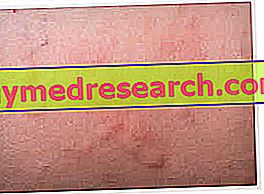DIPROSONE ® is a drug based on betamethasone dipropionate.
THERAPEUTIC GROUP: Non-associated corticosteroids
IndicationsAction mechanismStudies and clinical effectiveness Usage and dosage instructionsWarnings Pregnancy and lactationInteractionsContraindicationsUndesirable effects

Indications DIPROSONE ® Betamethasone dipropionate
DIPROSONE ® is a drug based on betamethasone dipoprige administered topically indicated in the treatment of dermatological inflammatory diseases such as: contact eczema; constitutional eczema; seborrheic eczema of the adult and infant (milky crust); stasis eczema; disidrosi; itching; generalized and anogenital; intertrigo; sun rashes; primary irritative forms (from plants, from chemicals, from insect bites), psoriasis and other deep inflammatory dermatoses such as the lichen simplex of Vidal-Brocq and the lichen ruber planus.
Mechanism of action DIPROSONE ® Betamethasone dipropionate
DIPROSONE ® allows the application of betamethasone topically, significantly reducing the side effects associated with the systemic administration of corticosteroids, although in the case of application with an occlusive bandage for a long time, it is not possible to exclude systemic effects.
The various formulations foreseen for this medicine (cream, ointment, cutaneous solution) thanks to the presence of particular excipients, allow betamethasone to carry out its own anti-inflammatory effect, through the classic mechanism of corticosteroids, and to the various adjuvants to exercise their own emollient action, moisturizing and refreshing.
However the main therapeutic action of this drug is due to the ability of betamethasone to induce local expression of lipocortin, capable of inhibiting the enzyme phospholipase and reducing the production of pro-inflammatory mediators such as leukotrienes, prostacyclines and prostaglandins.
The active ingredient in question, after its action, undergoes a hepatic metabolism characterized by glucuronation and sulfurization processes.
Studies carried out and clinical efficacy
1. BETAMETASONE AND PSORIASIS
Topical betamethasone therapy was particularly important in the management of psoriatic pathology characterized by lesions concentrated mainly in the scalp portion.
2. TOPIC BETAMETASONE AND VITILIGINE
The combined calcipotriol / betamethasone diproprionate therapy in localized vitiligo has ensured a greater rapidity of repigmentation with more lasting stability of the pigmentation in the face of fewer side effects.
3. BETAMETASONE AND PSORIASI VULGARIS
Psoriasis vulgaris is a pathology destined to increase in the future due to the progressive aging of the population. The use of minimally invasive and well tolerated treatments such as those based on betamethasone and calcipotriol in cream, will allow an optimal management of the disease regardless of age group
Method of use and dosage
DIPROSONE ® cream, ointment, gel and cutaneous solution of 0.064 gr of Betamethasone dipropionate:
we recommend taking these products once or twice a day, in quantities useful for covering the affected area, massaging gently until completely absorbed.
Warnings DIPROSONE ® Betamethasone dipropionate
Despite the systemic absorption of betamethasone, it can be carried out exclusively following prolonged therapies or occlusive medications, it is advisable to periodically check the functioning status of the adreno-hypothalamus-pituitary axis to avoid the onset of hypoadrenalism and associated endocrine disorders.
In the event that the aforementioned conditions or dermatological reactions of various types occur, it would be useful to provide for the suspension of therapy.
Treatment in pediatric patients should be carefully supervised by an experienced doctor.
PREGNANCY AND BREASTFEEDING
The absence of clinical trials related to the effects on the health of the fetus following the dermal use of betamethasone in pregnant women does not allow establishing the safety profile of DIPROSONE ®
In light of these data, the administration of DIPROSONE ® should be limited to cases of real need and under strict medical supervision.
Interactions
Betamethasone epicutaneous therapy, especially when continued for prolonged periods, can be exposed to drug interactions of clinical interest.
More precisely, the simultaneous administration of barbiturates, antihistamines and diphenylantoin may increase the clearance of betamethasone, significantly reducing its therapeutic effects.
At the same time, the potential hyperglycaemic effect induced by corticosteroids can significantly reduce the therapeutic efficacy of hypoglycemic drugs used in diabetes therapy.
Contraindications DIPROSONE ® Betamethasone dipropionate
DIPROSONE ® as well as all topical cortisones, is contraindicated in patients hypersensitive to the active ingredient or to one of its excipients and in patients suffering from latent infectious diseases.
Occlusive therapy is contraindicated in subjects suffering from atopic dermatitis.
Undesirable effects - Side effects
Although topical administration of betamethasone significantly reduces the number and magnitude of side effects associated with the intake of corticosteroids, prolonged corticosteroid therapy may result in itching, irritation, dryness, atrophy and rash, hypopigmentation and dermatitis.
These side effects occur most frequently following an occlusive dressing.
Note
DIPROSONE ® salable only under medical prescription.



